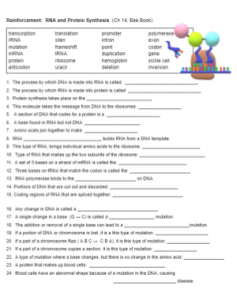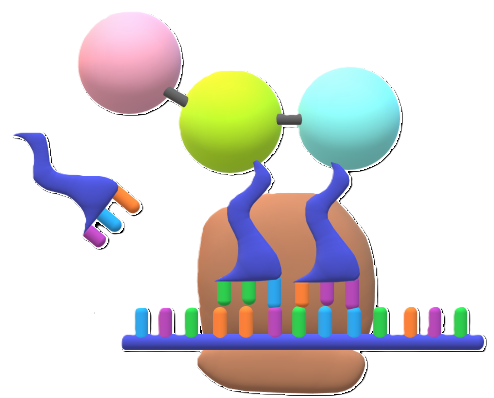
A new reinforcement exercise for Chapter 14 of the Bee book on RNA and Protein Synthesis!
RNA synthesis, or transcription, is the process by which a complementary RNA molecule is synthesized from a DNA template. This process occurs within the nucleus. The messenger RNA then travels to the cytoplasm to bring the code to the ribosomes.
Protein synthesis, or translation, is the process by which the genetic information encoded in mRNA is used to synthesize a specific sequence of amino acids, ultimately forming a protein. Translation occurs within the cytoplasm, where transfer RNA delivers the proper amino acid to a growing polypeptide chain.
In this exercise, students practice vocabulary related to the process of protein synthesis by matching terms to descriptions. I also include terms from section 4 which covers different types of mutations. This is a great way to review before the chapter test!
Another resource I use to help students understand the different types of mutations (point, frameshift, deletion, insertion, silent) is this worksheet on DNA, Proteins, and Mutations. Students must transcribe a section of DNA to determine which amino acids form the final protein. Any change, or mutation, in the sequence will result in a different protein that may not be functional.
The second page of this worksheet includes an image of translation where students label the structures and summarize the steps involved in protein synthesis.

The worksheet aligns to Chapter 14, though we do not cover section 3 at this time. You can find all resources for my freshman biology at Biology 2 and 2A.

